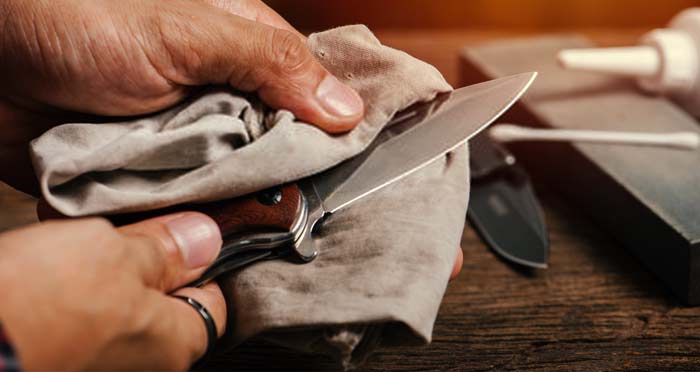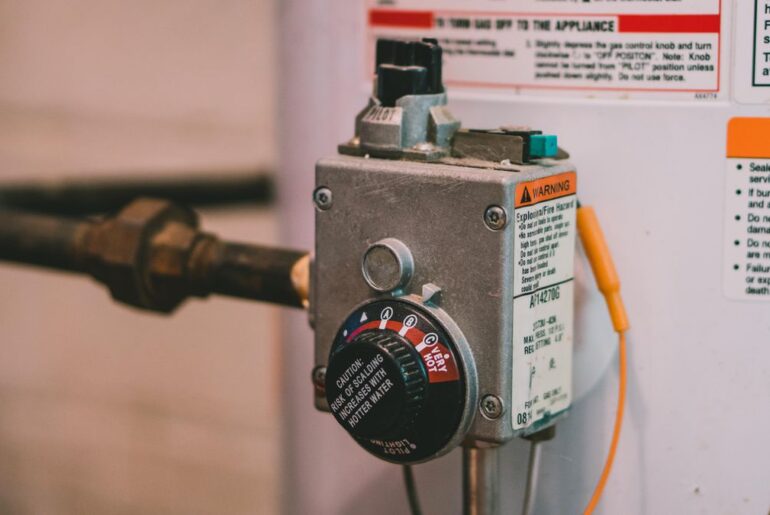Are you dealing with an old, dirty and rusty pocket knife? Well, not anymore! Because we have brought the best way to clean your old pocket knife without any hassle.
It doesn’t matter if you have a knife from one of the best pocket knife brands, it is a fact that they will get dirty with time.
Because pocket knives are ideally known for day to day use, they are more susceptible to damage and rust than other tools.
If you want your pocket knives to be your partner for a longer time, you are the one who can make it possible. Just keep them clean, and we’ll tell you how you are going to do it in no time.
How To Clean An Old Pocket Knife?
Make your pocket knives look new, polished, and sharpened with some simple steps. Below detailed are the easiest methods to clean your old pocket knives.
Things You’ll Need
To clean your old pocket knife, you will need the following things that you will find in your house easily:
- An old brush
- A cloth
- Warm water
- Toothpicks
- Paper towels
- Lubricants
- Soapy liquid
- Baking soda
- Lemon juice
Check Its Initial Condition
There are some heavy-duty EDC knives that rust rarely but it doesn’t mean they don’t need maintenance and care. Cleaning is something you will need to do regularly no matter what the knife type is.
Determine the amount of rust on the knife, and check whether you can really remove it to proceed further.
Remove The Lint
All the pocket knives come with a locking mechanism. Some of the locks are manual while others are automatic or spring assisted. Check to see if the locking mechanism of the knife is working fine.
Disassemble The Pocket Knife
Some cheap pocket knives work better than the expensive ones, which is why you don’t want them to get wasted. If you want your knives to be as durable as they can, then be prepared to clean them every now and then.
Soak It And Rinse It
Once you get the satisfaction that your pocket knife is still able to lock itself, proceed to the next step.
In a bowl of warm water, put some liquid soap and soak the knife in it. This will remove all the stubborn dirt particles from every corner of the knife.
Scrubbing And Rust Removal
Clean the handle of the knife inside out so that it will get rid of all the hidden dirt. Soaking the parts of the knife in soapy water will loosen the grip of grease and dirt off the knife.
Now gently scrub the knife thoroughly with a foam. Make sure you remove all the crud, grease, and dust from the lock for smooth locking and handling.
If you don’t know how to get rust off a pocket knife, this is the easiest way to do it at home.
Lemon juice is tried and tested for dissolving rust stains from steel. Make a mixture of lemon juice and baking soda and rub it over the rusted areas of the pocket knife.
Rub it for 2 to 3 minutes and then leave it for a while. Wipe it off with a paper towel, and you’ll get a shiny rust-free pocket knife.
Dry And Sharpen It
Now that your pocket knife is clean and rust-free, why don’t sharpen it a bit to make it functional again? There is a lot of information available on how to sharpen your pocket knife, but the choice is yours to make.
You can either sharpen pocket knife with a whetstone or with an electric sharpener. Many people have Lansky pocket sharpeners at their disposal because of their easy use. Just roll up your sleeves, and get ready to do some serious knife restoration stuff!
Lubrication And Wiping Out
It may take some time to sharpen your pocket knife, however, the results will be worth it. Dry the knife completely, and use a nice lubricant to polish it.
Conclusion
If you are not in a mood to clean your old pocket knife, the market is loaded with some of the best pocket knives. On the other hand, if you want to save your money for a stable budget, this article is all you need.
Check More: How To Use An Electric Knife Sharpener

Hi, I’m a clinical psychologist and inclined towards best buying practices for home and kitchen things. Critical towards choosing the best product and honest with my feedback. I’m a seasoned writer having more than 4 years of experience in multiple niches as well.
Please note: CharlieTrotters.com is reader supported. This page may contain affiliate links. If you buy a product or service through such a link we earn a commission at no additional cost to you.







